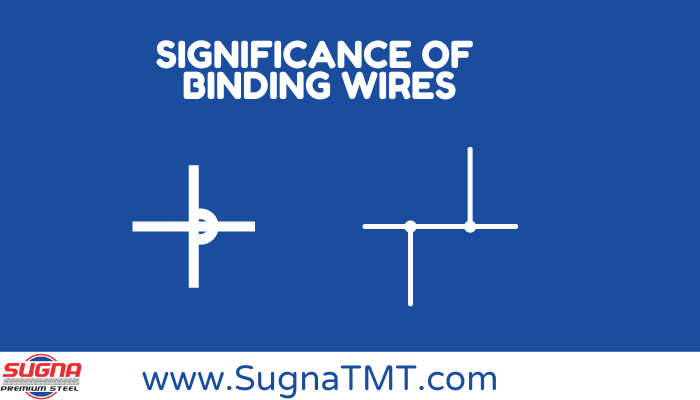In the realm of construction, every element plays a crucial role in determining the strength, durability, and safety of a structure. Among these elements, TMT (Thermo-Mechanically Treated) bars are fundamental for reinforcing concrete structures. However, the effectiveness of TMT bars is significantly enhanced by the use of binding wires. These seemingly small and simple components are vital for ensuring that TMT bars are securely fastened, contributing to the overall structural integrity. In this blog post, we will delve into the significance of binding wires in TMT bar installation and why they are indispensable in modern construction.
What Are Binding Wires?
Binding wires are thin, flexible steel wires used to tie or bind TMT bars at the junctions where they intersect. These wires are typically made of mild steel and are available in various gauges, depending on the requirements of the construction project. The primary purpose of binding wires is to keep the TMT bars in place during the construction process, ensuring that the reinforcement remains intact and aligned until the concrete is poured and set.
The Role of Binding Wires in TMT Bar Installation

-
Securing the Rebar Framework
The primary function of binding wires is to secure the rebar framework, which forms the skeleton of reinforced concrete structures. TMT bars are arranged in a grid-like pattern to provide the necessary tensile strength to the concrete. Binding wires are used to tie these bars together at their intersections, ensuring that they remain in the correct position during the pouring and setting of concrete.
-
Maintaining Structural Alignment
Proper alignment of TMT bars is essential for the structural integrity of the building. Misaligned bars can lead to uneven load distribution and weaken the overall structure. Binding wires help maintain the alignment of TMT bars, ensuring that the reinforcement is uniform and consistent throughout the structure. This, in turn, enhances the stability and strength of the finished building.
-
Preventing Displacement During Concrete Pouring
During the pouring of concrete, there is a risk that the TMT bars may shift or move out of place due to the pressure and flow of the concrete. Binding wires play a critical role in preventing this displacement by securely holding the bars in position. This ensures that the reinforcement remains intact and properly aligned, which is crucial for the concrete to bond effectively with the TMT bars.
-
Ensuring Flexibility in Construction
Binding wires offer a level of flexibility that is essential in construction. They allow for adjustments and realignment of TMT bars during the installation process. This flexibility is particularly important in complex structures where the reinforcement may need to be adjusted on-site to accommodate design changes or unforeseen challenges.
-
Contributing to Structural Safety
The safety of a structure depends on the quality and reliability of its reinforcement. By securely binding TMT bars, binding wires contribute to the overall safety of the structure. They ensure that the reinforcement remains in place under various stresses, such as during concrete pouring or under load conditions, thereby reducing the risk of structural failure.
Types of Binding Wires
Binding wires come in various types, each designed for specific applications:
- Mild Steel Binding Wires: The most common type, these wires are used in general construction for tying TMT bars. They are easy to work with and provide adequate strength for most projects.
- Galvanized Binding Wires: These wires are coated with zinc to prevent rust and corrosion. They are ideal for use in structures exposed to moisture or corrosive environments.
- Annealed Binding Wires: These wires are heated and slowly cooled to make them more flexible and ductile. They are used in situations where the binding needs to be adjusted frequently during installation.
The choice of binding wire depends on the specific requirements of the construction project, such as environmental conditions and the type of TMT bars used.
Importance of Proper Binding Techniques
While the type of binding wire is important, the technique used to tie the TMT bars is equally crucial. Improper binding can lead to weak joints, misalignment, and potential structural issues. The binding should be done in a way that the wire holds the bars firmly without cutting into them or causing any damage. Proper binding techniques ensure that the TMT bars are securely fastened, which is essential for the reinforcement to perform its function effectively.
Conclusion
Binding wires may seem like a small and insignificant component in the grand scheme of construction, but their role is anything but trivial. They are essential for securing TMT bars, maintaining alignment, preventing displacement, and ensuring the overall safety and integrity of the structure. By choosing the right type of binding wire and employing proper binding techniques, construction professionals can enhance the effectiveness of TMT bar reinforcement, leading to stronger and more durable buildings.
In the fast-paced world of construction, where every detail counts, binding wires provide the much-needed support to ensure that TMT bars perform their critical function. Investing in high-quality binding wires and skilled labor to install them is a small price to pay for the long-term safety and durability of the structure.

